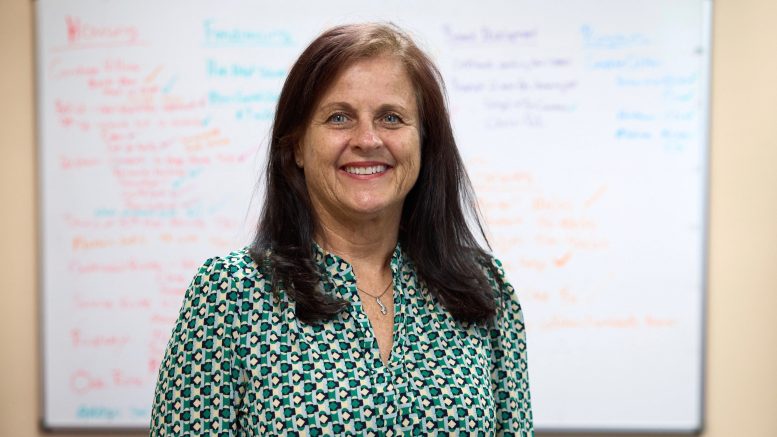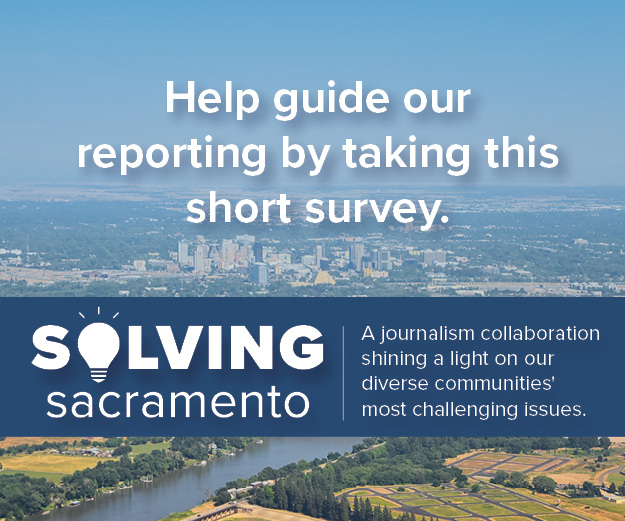By Lisa Thibodeau
Erin Johansen is the CEO of Hope Cooperative, a nonprofit organization that has been providing permanent housing, substance-use rehabilitation and mental health services to Sacramento’s unhoused population for over 40 years.
She sat down with us to discuss the most promising solutions to the housing crisis, why collaborating with other nonprofits, the city, and the county is so crucial, and how she keeps her 350 staff members armed with tools that help them advocate for their clients.
Tell me about your organization and how it relates to Sacramento’s homelessness crisis?
We operate in Sacramento and Yolo County with substance abuse services, crisis intervention services and homeless outreach services. We have an outreach engagement center on behalf of the city, and we are active participants with the Continuum of Care (Program), and the whole community’s effort to end homelessness.
There’s almost $30 million (county-funded) dollars coming to the Sacramento region now, but back in the ՚90s we were the very first organization to receive a HUD (U.S. Department of Housing and Urban Development) rental assistance grant, which has now become the Continuum of Care and is managed by Sacramento Steps Forward. Our organization was founded to really support housing, so supportive housing is our roots and our DNA.
What are the major factors driving homelessness in the Sacramento region?
No. 1 is lack of housing. This is essential as housing capacity is the No. 1 factor, because even people who are working cannot always afford their housing and can fall into homelessness. This is not their fault, but rather an economic reality. Then, they have the trauma from homelessness which exacerbates preexisting mental health conditions, which can lead to self-medicating with drugs and alcohol. The crisis for that person gets much worse, but really may have [started as] an economic issue.
In order for us to resolve homelessness, we have to quickly increase housing capacity. And then we need to address the mental health and substance use disorders. Also, there’s the issue of reentry from prison populations because people are released without resources or a plan and that adds to the number of folks on the street. Last are employment opportunities for those who are not disabled and can work. We need to address the crisis of poverty.
What do you see as the most promising solutions to assisting people who are unhoused?
Permanent supported housing is an evidence-based practice, which we have been doing since the ʼ90s. People need housing, but they also need wraparound services, so they can reintegrate into a house-lifestyle. Also, what I see as a very promising practice is creating a path for people out of permanent housing, which will increase capacity for those who need it, and further real success and community-living for those who can exit. The government has done some work in trying to make this possible by taking the voucher that funds permanent supported housing and making it a portable voucher to take into the community wherever it is accepted.
What evidence exists to show the effectiveness of these solutions?
There was a recent study by UCSF (Benioff Homelessness & Housing Initiative) that showed six initiatives that need to happen, and this confirmed what we already knew from being on the ground. It was great to have validation that we are going in the right direction. The study also dispels the conventional wisdom that people flock to California to be homeless because we have great services here.
And HUD has collected data showing permanent supported housing is at least 80% effective, in our community it’s 90% — the numbers are fantastic — it does work for 80-90% of people.
What limitations around these solutions exist?
Nonprofits are usually faster and nimbler than governments so there’s frustration about the speed of executing things. Also, there’s the housing capacity issue, the lack of availability of shelter of all types.
And permanent housing doesn’t work for everyone, the window of readiness is small, and some people need a higher level of care, or they aren’t ready to be housed, or they are deep in their addiction and can’t see the other side. That’s our job to help them get to that place and we do it through motivational interviewing, trauma-informed care, and case management, which are all evidence-based practices.
Tell us about the newly formed Sacramento City and County Continuum of Care and why collaboration is so important?
One of the problems here in Sacramento is that the city is contained within the county, and the county is responsible for social services, but most of the homeless folks reside in the city. There’s been tension between those two entities for years, making it hard for the nonprofit community to solve problems. It was historic for officials to sign this city and county partnership agreement, going on record to say: we are going to do this together.
The nonprofit community is very collaborative. Some partnerships are more successful than others, but there are organizations that do things better than we do, and we need to be able to tap into that. Having the city and county get into that agreement and also work with the Continuum of Care, we have a better chance of not being at cross purposes. This partnership is very new (December 2022) and it has its tensions, but it’s about working on issues together. What are you best capable of doing? What are we best capable of doing?
How do you and your staff stay positive and engaged in your work?
We spend a lot of our time on training and providing tools so that our staff feels empowered to do their job. We also intentionally hire people with “lived” experience, because we know that folks who have experienced their own recovery will walk beside those who are early in their journey and have a natural connection – the instinct to support is there.
Do you like your job?
I love this job. It takes a lot out of you, it’s an all-consuming job, but it’s the finest work I’ve ever done. And really, this is because of the staff — community mental health workers — they are in service all the time, and this is a low-paying job with a lot of stress. But it draws fine, human people that I have the privilege to work with every day.
This story is part of the Solving Sacramento journalism collaborative. Solving Sacramento is supported by funding from the James Irvine Foundation and Solutions Journalism Network. Our partners include California Groundbreakers, Capital Public Radio, Outword, Russian America Media, Sacramento Business Journal, Sacramento News & Review, Sacramento Observer and Univision 19. Take our reader survey.





One of the problems that keep ssi disabled people without a home was when individuals were “allegedly” covered under work injury insurance but the insurance commissioner changed up rules and had financial interest in opertunities to seize companies that were “looted” by parent companies left to operate dangerously and thus seized by state of ca. there are all kinds of bonds and security $ paid just to be able to operate and it includes 300
Illini just to operate and if it falls just below the ins commissioner seizes it and files to be executor is it’s estate and sues any entity company etc claiming to do utto pay claims yet we never get a settlement and it’s a conflict of interest we are left so poor we can’t pay attention and not given attorney welfare broke lowest medical coverage it’s like not having any are we protected? Heck no but the state moved into a new building in a sweet area with bullet proof glass,???
As I only pays payment 125 %bellow poverty level can’t rent anything because can’t prove 2xs rent in income victimized by every culture never safe liked homeless problem now they are rhyming to take my car my home due to registration I have thought about dying why doesn’t the government just kill me so I don’t contenplatw doing it. You allelready got millions from my claim I am suffering daily all programs that say they help turn me away I’m only here because I have responsibility to my children to never give up and my service dog . The plate in my neck cooks me in the heat and cold I can’t move no christmases since the state left me destitute think about not having a home and no money to buy a tree to decorate no quality if life and I was covered under the work compInsurancwme why so the in’s companies and state can profit and who cores about the poor where is all the money going?